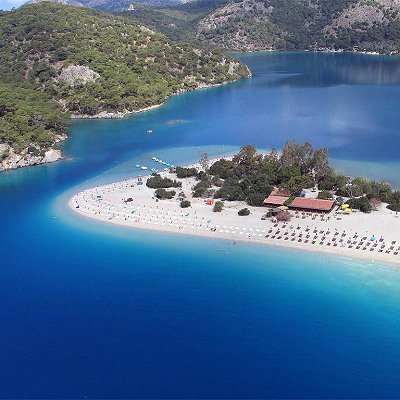
Like us on Facebook
PLACE NAMES


 
|
|
Çeşme
|

|
| |
|

Çesme is a coastal town and the administrative centre of the district of the same name in Turkey's westernmost end, on a promontory on the tip of the peninsula that also carries the same name and that extends inland to form a whole with the wider Karaburun Peninsula. It is a popular holiday resort and the district center, where two thirds of the district population is concentrated. Çesme is located 85 km west of Izmir, the largest metropolitan center in Turkey's Aegean Region. There is a six-lane highway connecting the two cities (Otoyol 32). Çesme district has two neighboring districts, Karaburun to the north and Urla to the east, both of which are also part of Izmir Province. The name "Çesme" means "fountain" and possibly draws reference from the many Ottoman fountains that are scattered across the city.
The town itself is dominated by Çesme Castle. While the castle is recorded to have been considerably extended and strengthened during the reign of Ottoman sultan Bayezid II, sources differ as to their citation of the original builders, whether the Genoese or the Turks at an earlier time after the early 15th century capture. A statue of Cezayirli Gazi Hasan Pasha (Cezayirli Hasan Pasa Monument), one of the naval commanders of the Battle of Çesme is in front of the castle and the Pasha is depicted caressing his famous pet lion and facing the town square. The battle itself, although ended in Ottoman defeat, had seen Hasan Pasha pulling out honorably after having sunk the Russian flagship Sv. Evstafii, together with his own ship, after which he had to follow the main battle from the coast before joining the capital by way of land, where he rapidly rose to become a distinguished grand vizier.
A few paces south of the castle, there is an Ottoman caravanserai built in the early centuries of the Ottoman conquest in 1528 by order of Suleyman the Magnificent, and it is now restored and transformed into a boutique hotel. The imposing but redundant 19th century Greek Orthodox church of Ayios Haralambos is used for temporary exhibitions. Along some of the back streets of the town are old traditional Ottoman houses, as well as Sakiz house-type residences of more peculiar lines, for the interest of strollers.
|
 Feel free to Email me any additions or corrections Feel free to Email me any additions or corrections
LINKS AVAILABLE TO YOUR SITE
| |





